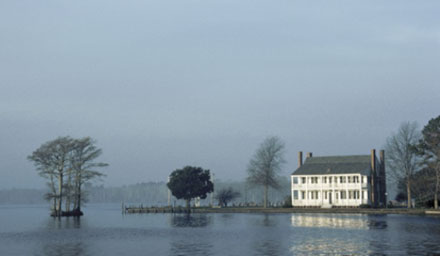March 2004
25 years ago
Around 4:00 a.m. on March 28, maintenance workers at the Three Mile Island nuclear-power plant, near Harrisburg, Pennsylvania, accidentally blocked the flow of water into the reactor core. This water acted as a coolant, absorbing the tremendous heat created there; without it, temperatures would build up dangerously, and the core could even melt down. Events like this had been planned for in the reactor’s design, and the staff was trained in dealing with them. The reactor shut down automatically, emergency water pumps were turned on, and control-room workers looked forward to resuming normal operations in a few hours.
How should a President honor war dead?
Since the beginning of the war in Iraq last year a small tempest has arisen in the media over whether or not George W. Bush should attend the funerals of American servicemen and women killed in the line of duty. As of this writing, Mr. Bush has not done so, a decision that critics tend to view as indicative of the administration’s preoccupation with “spin” and desire to avoid any negative images and associations. The White House has maintained, in its defense, that Bush’s first priority as Commander in Chief is to focus on the prosecution of the war and that to attend any one soldier’s funeral would obligate the President to go to all of them.
A colonial capital Remembered for its women

How did you hear about the Pilgrimage?” asked a volunteer at the Barker House when I showed up to buy a ticket. “Newspaper? Radio? We like to know what works.” In fact it was an accident that brought me to town last April. A lull in science-fair projects at home and the chance to meet up with an old college friend happened to coincide with the spring weekend, once every two years, when Edenton opens its private houses to the public. Following the lead of larger Southern cities like Natchez and Charleston, Edenton calls its tour, a tradition since 1949, the Pilgrimage, a word that conveys the reverence this part of the world attaches to home and family.
With American Heritage approaching its fiftieth birthday in December 2004, we’ve asked five prominent historians and cultural commentators to each pick 10 leading developments in American life in the last half-century. We begin in this issue with Terry Golway—the political columnist for the New York Observer, whose books include Irish Rebel: John Devoy and America’s Fight for Ireland’s Freedom and So Others Might Live: A History of New York’s Bravest—selecting the ten biggest changes in politics. In the next four issues we’ll follow with our other authorities’ choices of the half-century’s biggest transformations in innovation and technology; business; home and the family; and entertainment and culture.
The first president’s distillery will make whiskey once again
On the banks of the dogue run creek in fairfax County, Virginia, one chilly October morning last year, two men in waistcoats turned their attention away from stirring a pasty sour mash in a hogshead— whose sweet, beery aroma attracted and then drowned multitudes of yellow jackets—to fanning flames out of the glowing embers inside a brick firebox. Anchored to the top of the firebox was a copper pot still, shaped like a dollop of shaving cream. A modern distillery can produce four times as much in a day as George Washington’s could in a year, but the process and technology of pot-still distillation are little changed, and Washington’s venture as a distiller reveals an industrial side of him that is associated with more modern sensibilities.
The father of my colleague Carla Davidson was a newspaperman back in the racy violence of the Front Page days; he was also an accomplished novelist and television writer and a historian of wide interests. But he never could bring himself to care much about what he called “short-pants history,” by which he meant that time in America before modern accessories like railroads had started to build the country we inhabit today. I know what David Davidson was talking about: the faintly claustrophobic world of wigs and quill pens and the grave men at the convention we see pictured on our money and trying to read a page where, as Thomas Pynchon put it, the S’s look like F’s.
That world lies, formal and quaint with its butter churns and shoe buckles, 50 years beyond the farthest reach of the camera lens, very distant from our world, and, of course, much calmer. There is an actual publishing subgenre devoted to all the ways that World War II could have turned out differently, but the American Revolution never generates anything like that pitch of speculation. We know it was a close-run thing, but that’s just part of the legend, of the inevitability that embalms it.
